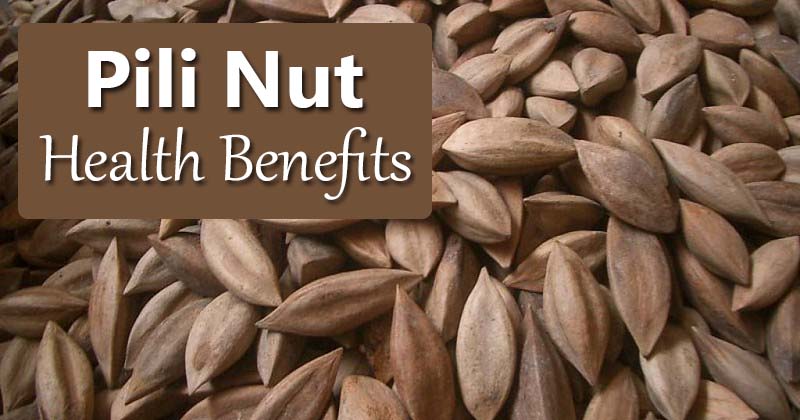Out of the hundreds of edible nuts in the world, we only consume a small number of them. However, that is slowly starting to change. Now it is possible to get some exciting nuts from around the world, including the ultra-healthy pili nut. Here’s what you need to know if you want to try pili nuts.
What Are Pili Nuts?

Pili (prounced “peeley”) is a large evergreen tree that is native to the Philippines. The pili tree produces a low-carb nut which recently started becoming popular in the West, particularly with people on the Ketogenic diet.
Even though pili nuts have been a staple food in the Pacific Islands for centuries, few people knew about pili nuts in the West until recently. Part of the reason for that is because it is impossible to shell the nut with machines. Instead, a paratilad (local name for pili de-sheller) will crack open the nut with a large knife called a bolo. Skilled paratilad know exactly where to hit the shell so it splits in half, causing the pili nut to fall out whole. It takes just a split second for them to de-shell a pili nut.
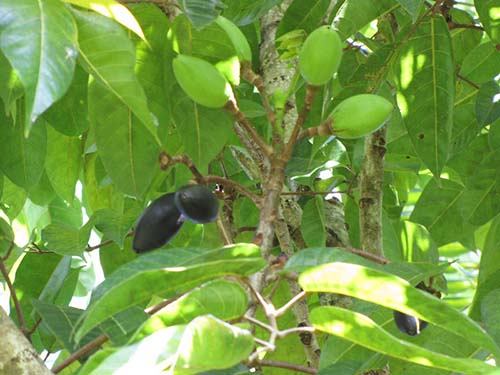
The pili tree grows in some other areas of the Pacific Islands but almost all of the world’s pili nuts come from one region in the Philippines known as Bikol.
What Do Pili Nuts Look Like?
Pili trees produce green fruits which turn black when they are ripe. There is a nut inside the fruit. Like with other nuts, you remove the hard shell to get to the tasty kernel inside. The pili nut kernel is fairly large at about 1 inch long.
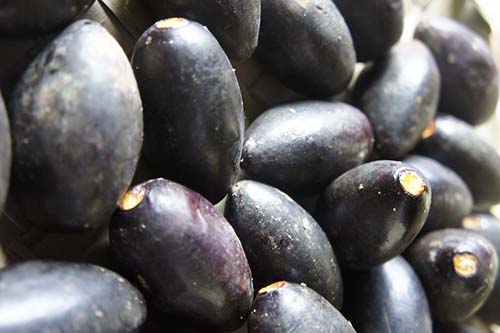
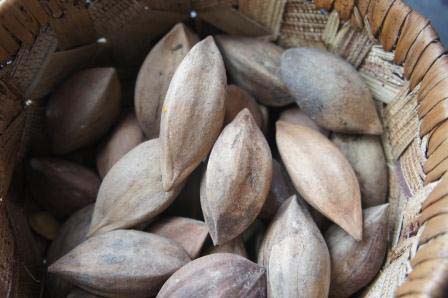
Pili Nut Taste
When raw, pili nuts taste a bit like pine nuts. They are creamy and have a delicate nutty taste. Roasted pili nuts are crunchier and have a richer, more buttery flavor. The flavor of pili nuts is also somewhat sweet with a mild bitterness to it.
Pili in English
Pili is the Bikol and Tagalog name for the tree. There is no specific name for pili in English, so most people just call them by the Filipino name. However, sometimes pili are referred to by their Latin name Canarium ovatum in English.
Other Names for Pili
- Pilauai (Tagalog)
- Galip nut (Pidgin)
- Philippine nut (English)
- Kenari nut (Malay)
- Lagting (Tagalog name for kernel without the shell)
Other Uses for Pili
If you visit the Philippines, you might be able to try boiled pili fruit (which somewhat resembles avocado) or sauted young pili shoots. Locals also use the pili wood for various purposes. However, the main uses for pili exported abroad are for oil and essential oils.
Pili Oil
The pili fruit is very oily. This oil can be extracted from the fruit and is considered healthier than olive oil. Pili oil – like tamanu and mongongo nut oils — does wonders for your hair and skin. Sometimes you can find it in cosmetics or high-end soaps.
Pili Essential Oil (Manila Elemi)
Resin from the pili tree is used to make an essential oil called Manila elemi which has a wonderful scent which lasts for a long time, so is used in many luxury perfumes and incenses. Chanel’s Ultra Correction Lift for facial skin rejuvenation, for example, contains pili oil.
The pili essential oil also has strong antibacterial and anti-inflammatory properties. It can be used for treating skin conditions and helping wounds heal faster. Diffused in the air, it can help with respiratory problems. Note that elemi essential oil sometimes comes from other Philippine trees related to pili. (sources: 1, 2, 3, 4)
Plant Therapy Elemi Essential Oil
Healing Solutions Elemi Essential Oil
Pili Nuts Nutrition
Nutritionally, pili nuts are mostly made up of proteins and healthy fats. They have very little carbohydrates: only about 3% of their weight is from carbs. By comparison, cashew nuts are approximately 20% carbohydrate and peanuts are approximately 16% carbohydrates. This makes pili nuts one of the best choices for people on low-carb diets.
Pili nuts also contain high amounts of some minerals. Most notably, they are very high in magnesium. Compared to other foods, the bioavailability (the body’s ability to absorb a nutrient) of magnesium in pili nuts is very high. Considering that up to 50% of the US population is magnesium deficient, pili nuts are a great source of this important nutrient.
| Nutrient | Per 1 Oz. |
| Calories | 201 |
| Carbohydrates | 1g |
| Protein | 3g |
| Fat | 22g |
| Saturated fat | 9g |
| Trans fats | 0g |
| Polyunsaturated fats | 2.1g |
| Monounsaturated fats | 10.4g |
| Cholesterol | 0mg |
| Potassium | 142mg |
| Calcium | 41mg |
| Iron | 0.9mg |
| Magnesium | 85mg |
| Zinc | 0.8mg |
| Phosphorus | 142mg |
| Vitamin A | 12.6IU |
Health Benefits of Pili Nuts
Anti-Inflammatory
Like with many other tree nuts, pili nuts contain healthy fats including Omega 3 fatty acids. These fats help reduce inflammation in the body. The pili plant also contains triterpenes, which are known to reduce inflammation. Considering that inflammation is linked to numerous diseases and disorders ranging from psoriasis to IBS, including pili nuts in your diet could help reduce many health conditions.
Improved Immunity
Studies of pili tree found that the plant contains large amounts of biologically-active compounds including flavonoid antioxidants, alkaloids, saponins and glycosides. These compounds help increase immunity and help fight off diseases.
Better Skin
The vitamin E found in pili nuts is very good for the skin. It promotes skin growth and fights against oxidative damage, thus keeping skin looking young and healthy.
Diabetes
Pili nuts are rich in fats. These fats are approximately 52% oleic acid. Oleic acid has been shown to increase insulin production naturally.
Cholesterol and Heart Health
Another benefit of the oleic acid in pili nuts is that it is very good for cardiovascular health. Studies show that oleic acid helps reduce unhealthy LDL cholesterol levels while also reducing inflammation. The effect is lower blood pressure, better circulation, and reduced heart disease.
Improved Sleep
One of the health benefits of pili nuts which gets mentioned a lot is improved sleep. This benefit has to do with the high magnesium content of the nut. Magnesium is crucial for regulating the nervous system and chemicals which regulate sleep. Magnesium can also help reduce stress and anxiety, making it easier to sleep.
(Sources: 8, 9, 10,11,12,13, 14, 15, 16, 17)
Pili Nuts Recipes
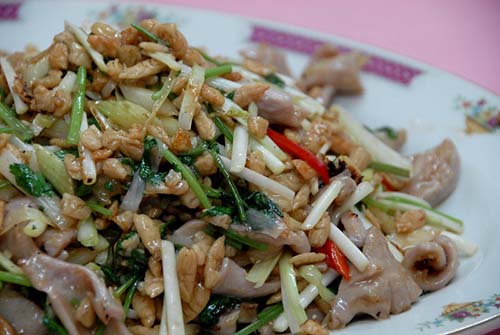
I personally don’t snack on nuts that often. Rather, I like to use nuts in sauces, spreads, and stir-fries. Generally, you can use pili nuts instead of pine nuts or cashews – such as these recipes for pesto, red pepper and nut pasta sauce, and sliceable nut cheese.
Pili Nut Price
Because pili nuts have to be de-shelled by hand, they are pricier than most other nuts. Expect to pay about $2 to $3 per ounce. By contrast, even “expensive” nuts like cashews and almonds cost about $0.50 per ounce. Pine nuts, which are usually considered the most expensive nut, are around $1.00 per ounce.
Where to Buy Pili Nuts
You can find pili nuts for sale at local markets in the Philippines. In the United States though, there aren’t too many brands which sell pili nuts (that should change in the near future though). Whole Foods sometimes has pili nuts but they are fairly pricy there. Instead, your best bet is to buy pili nuts online. Amazon has some good deals.
The brand “Pili Hunter” is most the well-known and has the most options.. However, a few other brands have better prices.
Pure Traditions Brand
- Products: Sells raw sprouted pili nuts which are plain, salted, or flavored. They also have pili nut butters and variety packs.
- Buy Here
Polynesian Pili Nuts
- Products: These pili nuts have been de-shelled but still have the skin on them. This helps them last longer.
- Buy Here
Pili Pushers
- Products: They have some interesting flavors of raw, sprouted pili nuts such as cacao and coffee flavors.
- Buy Here
Pili Hunters
- Products: They sell raw sprouted pili nuts in various flavors as well as pili nut butters and variety packs.
- Buy Here
How to Store Pili Nuts
To keep pili nuts from going rancid, you should store them in the refrigerator or freezer in an air-tight container.
The reason for this is because pili nuts contain a lot of fat. When fats are exposed to oxygen or heat, they start to go rancid and the nutrients deteriorate. The process is gradual: the longer you wait to eat your pili nuts, the fewer nutrients there will be.
Pili Nut Shelf Life
At temperatures of 87F, pili nuts will go bad within 6 months. At temperatures of 77F, the pili nuts will last for approximately 9 months. If you keep the pili nuts in the refrigerator, they should last for a year or more. Pili nuts stored in the freezer can last indefinitely but, for best nutrition, are still best to eat within a year or two. You’ll know that the pili nuts have gone bad if they have a sour fermented smell or a strong bitter taste. (Sources: 18, 19, 20)
Do you eat pili nuts? Share your recipes with us in the comments section below.
Image credits: “stir fried ’pork tripe tips’ with pili” (CC BY-NC-SA 2.0) by sunday driver,
“Pili nuts in bakay (bacbac container)” (CC BY 2.0) by AlmaGamil_Philippines,
“Pili Nuts: The Superfood You Probably Ha” (CC BY-SA 2.0) by Breaking Asia,
“Pili trees of Santa Barbara, Bulusan” (CC BY 2.0) by AlmaGamil_Philippines,
“starr-110330-4035-Canarium_ovatum-fruit_” (CC BY 2.0) by Starr Environmental,
“Pili fruits from Kapilihan” (CC BY-SA 2.0) by AlmaGamil_Philippines

